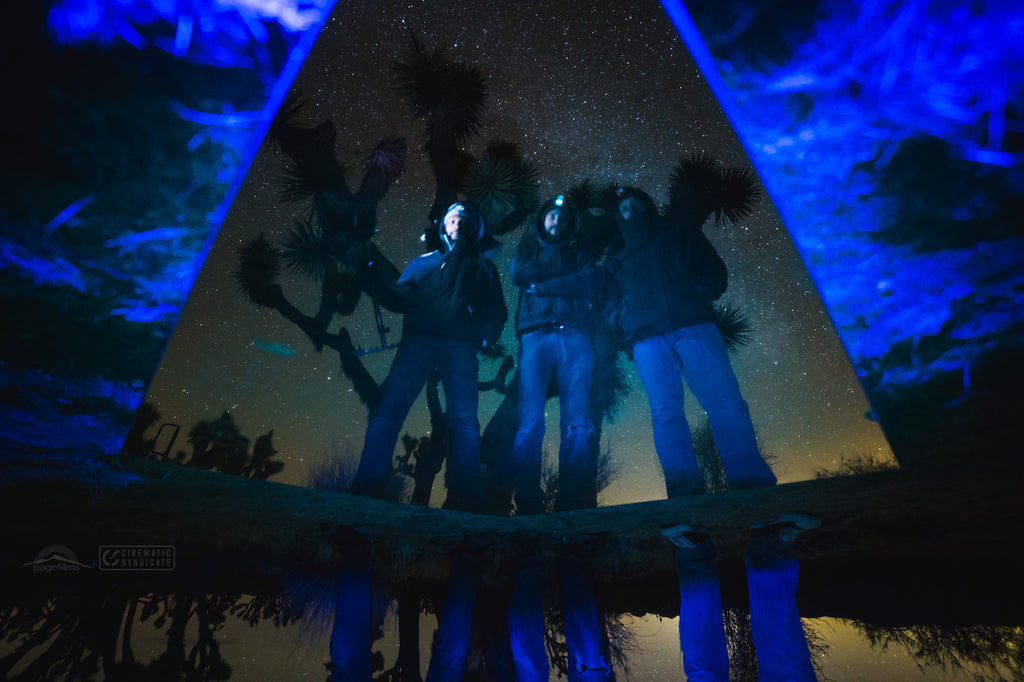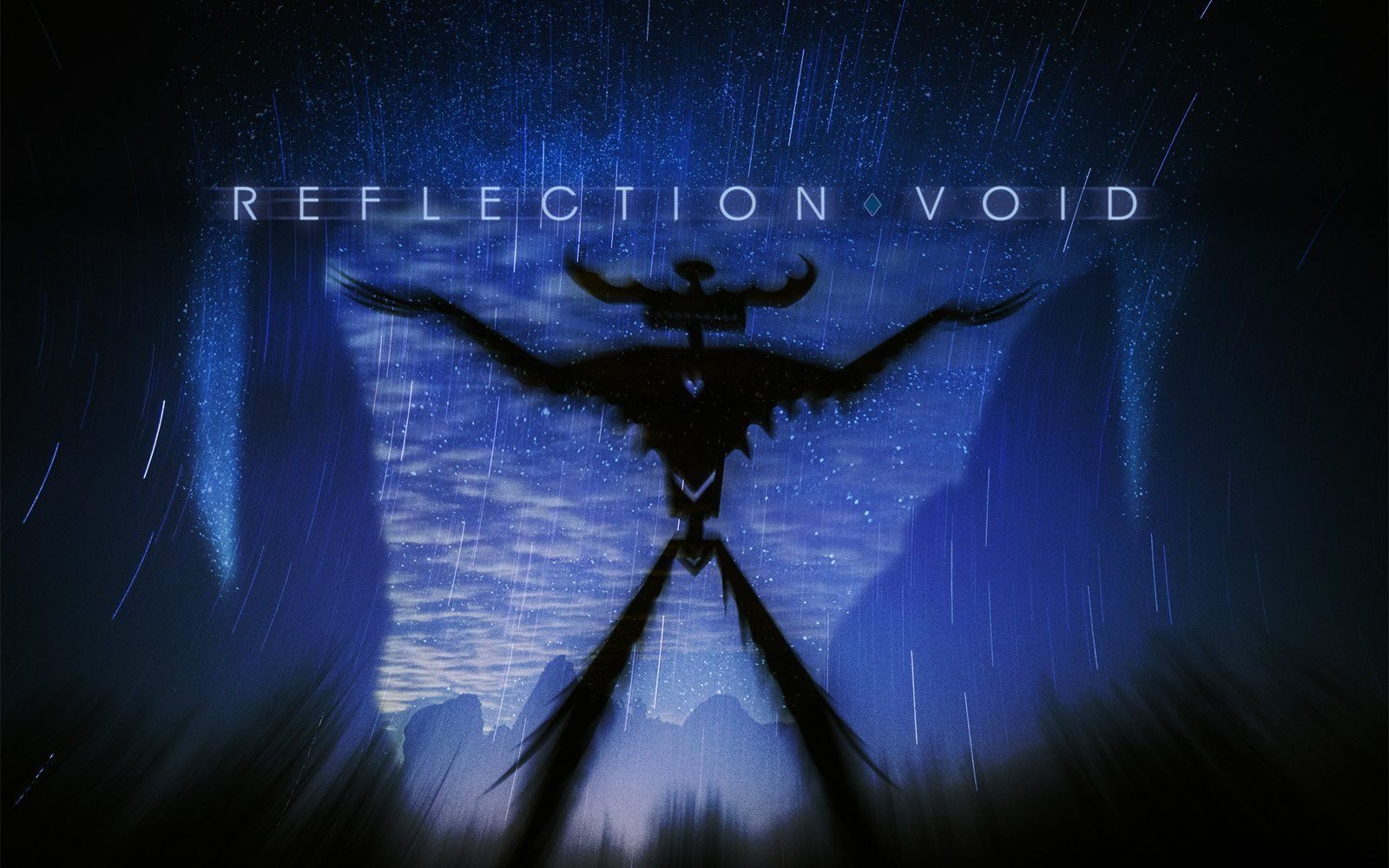ReflectionVOID is a film that pushes the aesthetics and technical boundaries of timelapse using the spectrum ST4
*Recommended: dark viewing environment / 4K or HD resolution / quality sound
Interview with the Artists: Lance Page and Jesse Clark
Q: What was the initial impulse or spark to make this film? Was it commissioned by someone?
LP: I usually have at least a couple ideas for time-lapse projects kicking around in my mind at any given time, but this one was special to me. It all started with the simple idea of shooting time-lapse into mirror reflections of the stars. After dreaming about what this mirror concept could look like for a couple years, I met Jesse, who came on as co-producer– and I finally had the support I needed to execute it. We agreed the concept had the potential to be the first of its kind, so we intended on nailing it. What really got this project off the ground was our combined inspiration that came with applying a heavy, surreal style to a strong technical idea to create a unique flavor of cinema.
 (Photo credit: Stephan Knight-Jeanpierre / Vizual Jockey)
(Photo credit: Stephan Knight-Jeanpierre / Vizual Jockey)
JC: The internet is saturated with timelapse content and so much of it is similar, so it’s a challenge to make something eye catching. It seemed like the perfect combination of visual elements to try out some really interesting technical ideas we had never seen before. We combined our own resources to build the project from the ground up, completely self-funding it.
 (Photo credit: Stephan Knight-Jeanpierre / Vizual Jockey)
(Photo credit: Stephan Knight-Jeanpierre / Vizual Jockey)
Q: We know you take pride in how you composed your visual effects. Was it all done in camera, or did you mix and match digital effects in there?
LP: The majority of our reflection effects were created in camera. We built a bunch of mirror props– clean-edged mirrors glued to plywood that we mounted out in the desert, under the stars. We did use minimal digital effects for our narrative scene, namely to composite our character’s silhouette into the time-lapse and to clean up a few shots in the scene where he discovers the ‘portal’ balancing on the rock. We also layered two motion-control passes together to remove the back of our mirror 'portal.' Besides that, all the individual 'portal' time-lapse sequences were captured using practical effects with no digital compositing.

In a way, each shot was like scouting for 3 shots. We needed to find both our camera and the mirror’s position, but also the way they relate to each other throughout the sequence. And of course adding motion control to both the camera and the mirrors made things significantly more challenging from there.
 (Photo credit: Stephan Knight-Jeanpierre / Vizual Jockey)
(Photo credit: Stephan Knight-Jeanpierre / Vizual Jockey)
JC: To us, these practical effects are really the meat of this project. If we had composited each of these shots digitally, the effect would be nowhere near the same. We wanted to make something that didn’t scream “hey, there’s a mirror!” all the time. Making things surreal was a matter of extensively scouting for our locations, and what you might call “reflection scouting” as well. The mirror is just adding another optical surface to the frame. The right combination of backgrounds and foregrounds– multiple horizons or multiple subjects, for example– created additional meaning for each clip we captured.

Q: What were the most challenging or unforeseen aspects of production?
LP: Due to our out-of-pocket budget, we had about one week to pull off all these shots with a limited crew. We chose the high desert geography of Joshua Tree because of its reliable night sky and surreal landscape. Our shoot week was blessed with clear skies and vibrant stars. Since we had to take advantage of each dark hour, we made sure to stagger the time-lapse setups to maximize productivity. But of course, that came at a cost. We realized pretty quickly that in order to pull it off, we had to take a break from sleeping!
 (Photo credit: Stephan Knight-Jeanpierre / Vizual Jockey)
(Photo credit: Stephan Knight-Jeanpierre / Vizual Jockey)
Each morning after shooting we could only nap until the sun started blasting our tents, so at that point we were up and prepping food, gear and our daily scout plans. We’d scout until we had 2 hours of daylight remaining, then would set up our first shot and aim to hit the ‘start’ button by the time the skies were dark enough. After getting our first shot started, we’d move on to the next sequence immediately, which would take another couple hours to set up and start. Then we would find a third setup to start with just enough dark sky to pull it off before the sunlight took over. The peace of mind the gear gave us during processes like these was crucial in pulling off these “do or die” shots.
JC: It required a lot of quick learning as we maneuvered around the landscape, oftentimes hand-holding the huge mounted mirrors while calling out precise adjustments by walkie talkie, sometimes hundreds of feet away. One particularly crazy shot involved zooming into three mirrors, while the camera dollied backwards in the opposite direction of the zoom. The idea was to achieve a Vertigo type shot which looked like space was compressing in front of the camera. Each mirror surface was offset and placed on the rocky landscape and had to be lined up perfectly to give the impression the mirrors were bleeding into each other. We had to check the shot about 20 times before we ended up starting the sequence in order to ensure perfect mirror placement. At that point, we were using every single stand and tripod that we hauled to the desert.
 (Photo credit: Stephan Knight-Jeanpierre / Vizual Jockey)
(Photo credit: Stephan Knight-Jeanpierre / Vizual Jockey)
Q: There is a lot of timelapse, but how did the video motion control come into the picture? How did the spectrum help you realize your vision?
LP: As per my usual style, I like to introduce unique elements into my time-lapse endeavors. I wanted to bring in a character to discover one of these ‘portals’ to help transition the audience into the surreal experience of the VOID. So we decided to utilize the ST4’s ‘video to time-lapse’ function to composite live action video of our character with time-lapse footage from the exact same angle. We shot the scene using natural light during the ultra-short window of twilight, then left the camera rig to roll back to start and shoot the same shot as a time-lapse all night. The two shots were processed and composited together to create Stephan’s silhouette in the 'portal' reflection. We also used the repeatable video moves to composite the close up of Stephan’s face approaching the 'portal' while masking out the rigging we had behind it.

JC: The piece was definitely conceived with motion control involved– we knew we wanted to move the camera, or the mirror, or both– to get some interesting effects. We were able to program our shot movement in a rock-solid manner, very quickly and organically (even recording multiple live passes and choosing the best one) in order to get the different plates we needed. And being able to “flip” the shot to time-lapse mode was an incredible way to mesh the different timelines of the natural landscape over the same camera move. Again, being able to quickly find, and re-find our bearings was crucial to getting the amount of shots we did in the time we had.

Q: How did eMotimo’s design of the spectrum help you achieve the shots you were looking for?
JC: I used to be a huge gamer when I was younger, so seeing the [PS4] controller was like some sort of camera dream had come true. To get to drive this thing the same way I’d drive a spaceship in a game felt right to me. Any time you can get tactile with the controls of a piece of technology it’s going to be able to get you closer to your actual goal. Whether it’s useful buttons on a camera body or a release knob placed in the perfect spot, you call fall in love with operating the gear because it actually feels good to use it. Then, those well-designed pieces actually fall away from your attention– they help you get out of your own way and see what you’re actually trying to achieve, which is the point. You see with your eye, not the camera. So if I’m setting up a shot and I can dial something in quickly on a thumb joystick, I’m gonna get excited about that.

LP: I had pushed the TB3 (eMotimo’s previous motion controller) to its very limits and even broke it a few times in the course of hauling it through inclement weather and dangerous geography. The ST4 design totally crushed those limits. With its new design and mounting system, it’s able to pull more weight and is built like a tank. In addition to the physical structure, its brain is a lot smarter than the TB3’s. Having the ability to quickly jog to each keyframe let us fine tune our reflection angles. We were also able to give each motor axis a different type of keyframe, depending on what it needs to accomplish. And since the TB3 used a Nintendo Wii remote for live control, it only makes sense that the ST4 uses a PS4 remote! With different motor drive modes, dialing in those keyframes were a breeze using the highly functional and responsive gaming remote.
Q: You got a chance to play with an early model of the Fz (focus) system while you were out there, along with a host of other experimental features that we were developing. What were you most excited to play with out there? What were some of the challenges?
JC: Just adding the 4th motor gave us a lot to play with. I got excited about the torque of the Fz because the only zooms we had weren’t geared for motor control and needed focus ring attachments. Because the unit had the power and precision, the non-cinema lenses didn’t skip or jump when moved over the course of several hours.
LP: I’d been hoping to add reliable focus control to astro time-lapse for years. Even though we were working with a 3D-printed beta version of Fz, we were ecstatic about the ability to control the lens with precision during a time-lapse. That, combined with the versatility of using keyframes and repeatable moves really opened up a world of creative possibilities. Though since many of these features were still in beta, we had to work around some kinks (hence the gaff taped Fz rig!).

We pushed the ST4 + Fz beta design as far as we could. At one point we had two ST4 units with the camera on one and the mirror on the other. The camera was panning and changing lens focus, all while the mirror was dollying and spinning on the other rig. In all honesty, due to how fatigued we were and the difficulty of the shot, we did not have high hopes. To this day, we can barely recall programming this shot– after several all-nighters, our patience was low at 3am. When we checked the shot the next morning, the ST4 nailed its marks. The camera panned with the mirror and focused back to the stars as the mirror spun and dollied away. It turned out to be one of our favorite shots!
The real challenge was not getting too excited about the technology and overlooking the creative. Without artistic intention, all the fancy toys are just toys.

Q: What are you working on currently? What's next that you can chat about?
LP: We’re actually in development on another VOID installment. This one will kick things up a notch with a powerful narrative story and a brand new landscape to reflect. We’ll be posting more about that on our Page Films and Cinematic Syndicate pages. Meanwhile, a portion of ReflectionVOID will soon be featured on Adult Swim’s “Off the Air” show on Cartoon Network!
I also have a couple exciting projects to be released in the coming months, both of which involve years of landscape time-lapse and cinema in the Cascades mountains of the Pacific Northwest and the hyper-active Kilauea Volcano in Hawaii. Stay tuned and thanks for checking out our work!
JC: We’re excited to work with Adult Swim and Cartoon Network– we’re huge fans of course. The opportunity to air some of this film on late-night television makes me stoked. Lance and I just spent time in the Ochoco National National Forest capturing the recent total solar eclipse. We're currently reaching out to filmmakers and directors who might need the footage in their productions.
As for other projects, I’m about to release a short film I wrote and shot a year ago, I’m currently focused on cinematography work, shooting films and music videos here in Portland, and prepping for some stop-motion shoots for the colder months. I’m excited to live in such a hub of timelapse and stop-motion folks up here. Working with practical effects has always been important to me, so I’m excited to produce another installment of our VOID films with Lance.
Watch the full behind the scenes video below:
● See more of Lance’s work at PageFilms.com and his Instagram
● See more of Jesse’s work at CinematicSyndicate.com and his Instagram



Share:
spectrum ST4 : Backlight
DIY Photography spectrum review
2 comments
How did you run the motor for the track and the focus motor and a zoom motor with the st4??? It only has 2 outputs for motors I thought.
We are stoked that you guys played with our gear and pushed us hard on the usability of Fz so early. 3 point move, 5 point moves and not 9 point moves are on box and helping to enable you on your next shoot.